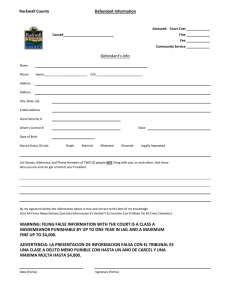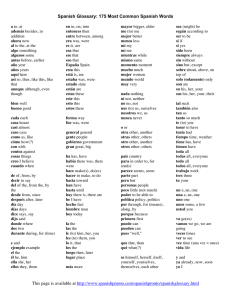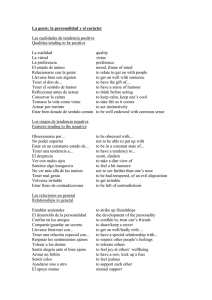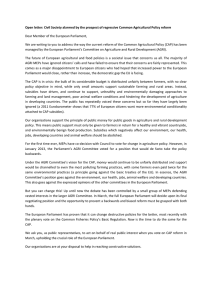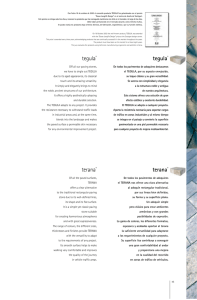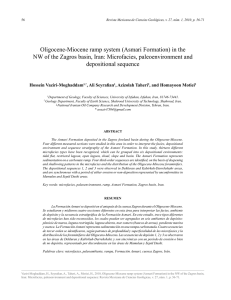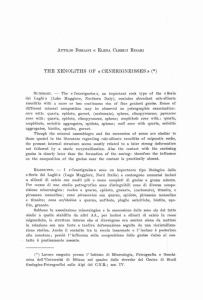AN INNER SHELF FORAMINIFERAL FAUNA AND ITS RESPONSE
Anuncio
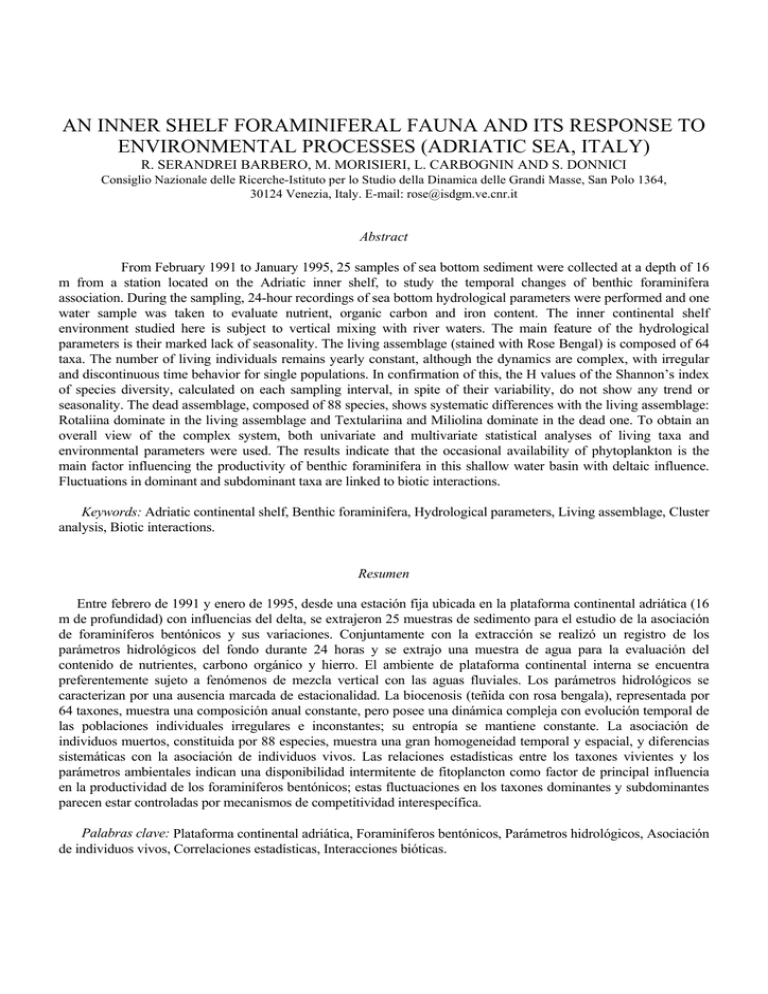
AN INNER SHELF FORAMINIFERAL FAUNA AND ITS RESPONSE TO ENVIRONMENTAL PROCESSES (ADRIATIC SEA, ITALY) R. SERANDREI BARBERO, M. MORISIERI, L. CARBOGNIN AND S. DONNICI Consiglio Nazionale delle Ricerche-Istituto per lo Studio della Dinamica delle Grandi Masse, San Polo 1364, 30124 Venezia, Italy. E-mail: [email protected] Abstract From February 1991 to January 1995, 25 samples of sea bottom sediment were collected at a depth of 16 m from a station located on the Adriatic inner shelf, to study the temporal changes of benthic foraminifera association. During the sampling, 24-hour recordings of sea bottom hydrological parameters were performed and one water sample was taken to evaluate nutrient, organic carbon and iron content. The inner continental shelf environment studied here is subject to vertical mixing with river waters. The main feature of the hydrological parameters is their marked lack of seasonality. The living assemblage (stained with Rose Bengal) is composed of 64 taxa. The number of living individuals remains yearly constant, although the dynamics are complex, with irregular and discontinuous time behavior for single populations. In confirmation of this, the H values of the Shannon’s index of species diversity, calculated on each sampling interval, in spite of their variability, do not show any trend or seasonality. The dead assemblage, composed of 88 species, shows systematic differences with the living assemblage: Rotaliina dominate in the living assemblage and Textulariina and Miliolina dominate in the dead one. To obtain an overall view of the complex system, both univariate and multivariate statistical analyses of living taxa and environmental parameters were used. The results indicate that the occasional availability of phytoplankton is the main factor influencing the productivity of benthic foraminifera in this shallow water basin with deltaic influence. Fluctuations in dominant and subdominant taxa are linked to biotic interactions. Keywords: Adriatic continental shelf, Benthic foraminifera, Hydrological parameters, Living assemblage, Cluster analysis, Biotic interactions. Resumen Entre febrero de 1991 y enero de 1995, desde una estación fija ubicada en la plataforma continental adriática (16 m de profundidad) con influencias del delta, se extrajeron 25 muestras de sedimento para el estudio de la asociación de foraminíferos bentónicos y sus variaciones. Conjuntamente con la extracción se realizó un registro de los parámetros hidrológicos del fondo durante 24 horas y se extrajo una muestra de agua para la evaluación del contenido de nutrientes, carbono orgánico y hierro. El ambiente de plataforma continental interna se encuentra preferentemente sujeto a fenómenos de mezcla vertical con las aguas fluviales. Los parámetros hidrológicos se caracterizan por una ausencia marcada de estacionalidad. La biocenosis (teñida con rosa bengala), representada por 64 taxones, muestra una composición anual constante, pero posee una dinámica compleja con evolución temporal de las poblaciones individuales irregulares e inconstantes; su entropía se mantiene constante. La asociación de individuos muertos, constituida por 88 especies, muestra una gran homogeneidad temporal y espacial, y diferencias sistemáticas con la asociación de individuos vivos. Las relaciones estadísticas entre los taxones vivientes y los parámetros ambientales indican una disponibilidad intermitente de fitoplancton como factor de principal influencia en la productividad de los foraminíferos bentónicos; estas fluctuaciones en los taxones dominantes y subdominantes parecen estar controladas por mecanismos de competitividad interespecífica. Palabras clave: Plataforma continental adriática, Foraminíferos bentónicos, Parámetros hidrológicos, Asociación de individuos vivos, Correlaciones estadísticas, Interacciones bióticas.
